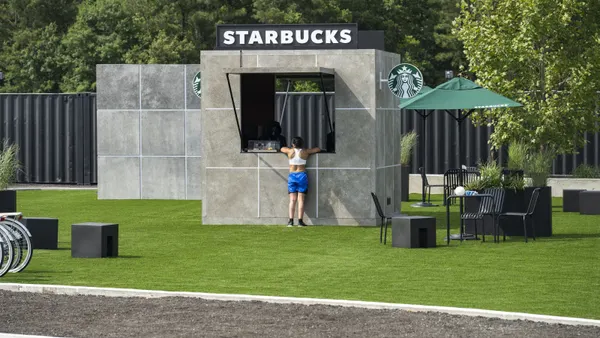Dive Brief:
- Anheuser-Busch InBev has been building its first in-house creative agency over the past year, in news first reported by Ad Age . The agency uses "data-driven insights to produce creative that is more local and personalized — with greater agility," per press materials the company shared with Marketing Dive.
- The are currently 50 employees working at Draftline, which was launched less than a year ago. After initially focusing on digital and social, Draftline now works on packaging, cans, sign-making, out-of-home, digital video, GIFs, memes, display, data collection, audience segmentation, email marketing, radio, programmatic media buying, analytics, influencer marketing, social listening, community management and more.
- The agency's first project was a test campaign for Michelob Ultra, a beer marketed to the growing consumer demand for low-calorie beers. Draftline has since worked with more than 42 brands in the company's portfolio. João Chueiri, AB InBev's VP of consumer connections, leads the new agency and Spencer Gordon, senior director of digital at the company, manages the team.
Dive Insight:
Anheuser-Busch's move to create its own agency follows the industry-wide push towards data-driven marketing. It also comes as other large beverage marketers have announced similar plans to strengthen their first-party databases and better understand their consumers. Notably, PepsiCo recently revealed that it was building its own in-house media planning team with a focus on CRM, ad tech and data. While the trend of in-housing has been around for a couple of years, it appears to be picking up steam, with IAB research indicating growth in the number of marketers adopting this approach and that in-house agenices are tackling more important work.
Draftline has been building a significant creative team, which likely means that it will be focused more on branding than in-house strategies focused on data, social and media planning. This move gives the AB InBev the reigns as it looks to rebuild the value of its biggest brands, including Budweiser and Bud Light, which have slid considerably in recent years. Big beer consumption has declined as Americans are favoring Mexican imports, craft beers and wine and spirits, leaving big beer sales to fall behind.
The focus on building creative in-house comes with some challenges, notably that any work could suffer from a lack of outside input, resulting in messaging that fails to account for broad social trends. PepsiCo famously discovered this a couple of years ago with a Kendall Jenner ad created in-house that was immediately panned for making light of protests around the country.
As with other marketers that have developed in-house agencies, Draftline is likely intended to help AB InBev cut costs and save on overhead associated with outside agencies and partners at a time when there is ongoing concern over a lack of transparency in agency fees and the digital media supply chain. Procter & Gamble has saved nearly $1 billion in agency fees and ad production costs over the last four years by moving business from agencies to in-house departments. By reinvesting those savings into marketing, P&G has seen a sales boost.
João Chueiri, who is leading Draftline, has been actively rethinking how AB InBev can help save the legacy of its most popular brands. At the Advertising Week conference last fall, he discussed how a focus on creating curated, localized experiential promotions can create lasting impressions with consumers. By building culturally-led experiences — in sports arenas, music venues and elsewhere — he said that brands could get attention in ways that traditional sponsorships and advertising can't in the digital age.
Correction: A previous version of this story misstated that Draftline's name was subject to change.











